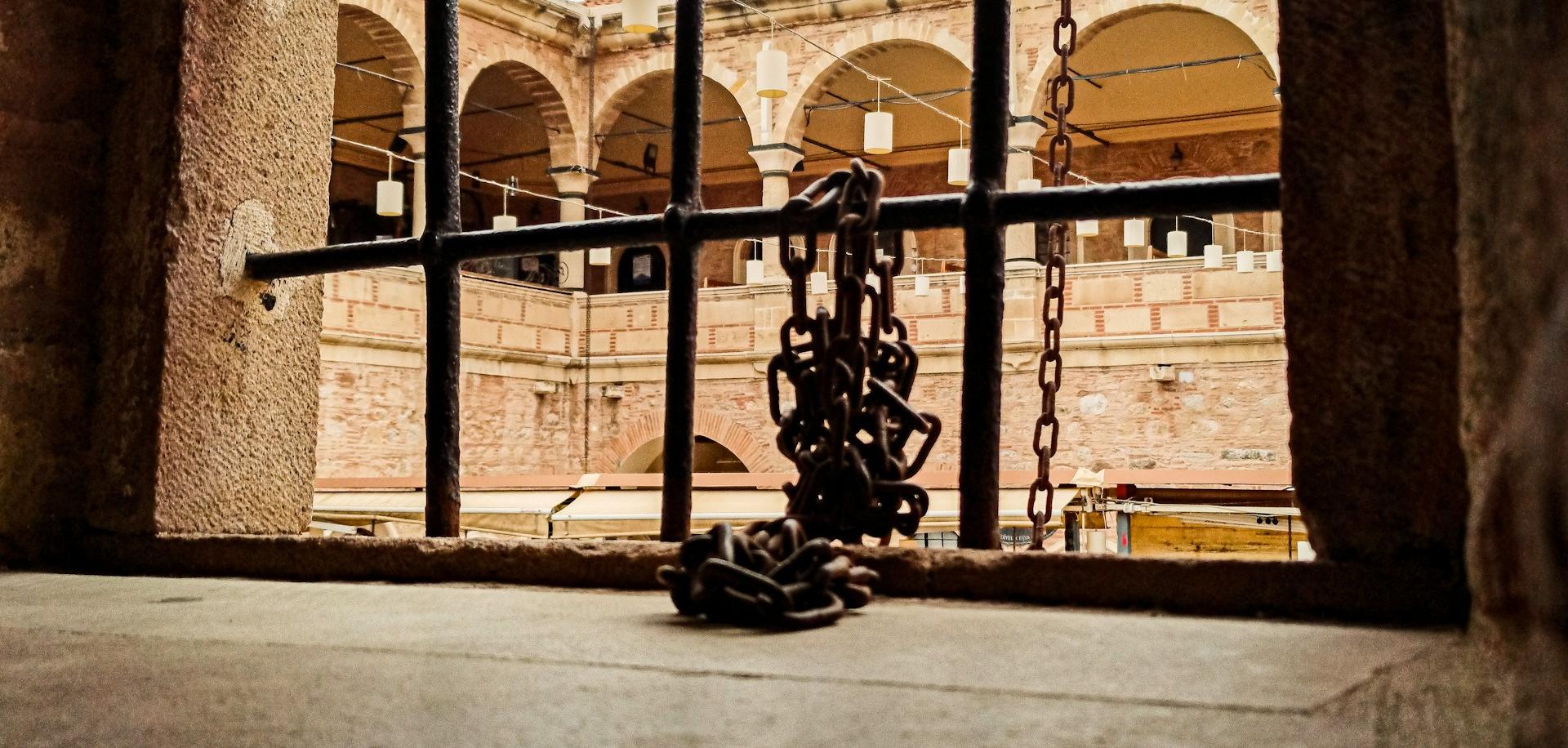About…
chains in the Bible
Various types of chains are mentioned in Scripture.
-
Chains to constrain prisoners
Chains were used to shackle prisoners to prevent their escape (Judges 16:21; 2 Samuel 3:34; 2 Kings 25:7; Jeremiah 39:7).
Paul was bound with a chain to a Roman soldier (2 Tim. 1:16).
For this reason, therefore, I requested to see you and to speak with you, for I am wearing this chain for the sake of the hope of Israel. —Acts 28:20
…I am an ambassador in chains… —Ephesians 6:20 excerpt
The Lord give mercy to the house of Onesiphorus, for he often refreshed me and was not ashamed of my chains —2 Tim. 1:16
Sometimes, for the sake of greater security, the prisoner was attached by two chains to two soldiers, as in the case of Peter.
Now on the very night when Herod was about to bring him forward, Peter was sleeping between two soldiers, bound with two chains, and guards in front of the door were watching over the prison. —Acts 12:6
Samson was restrained in a Phillistine prison with chains.
Then the Philistines seized him and gouged out his eyes; and they brought him down to Gaza and bound him with bronze chains, and he was a grinder in the prison. —Judges 16:21
…he blinded the eyes of Zedekiah and bound him with bronze fetters and brought him to Babylon. —2 Kings 25:7 excerpt
…they captured Manasseh with hooks, bound him with bronze chains, and took him to Babylon. —2 Chronicles 33:11 excerpt
He then blinded Zedekiah’s eyes and bound him in fetters of bronze to bring him to Babylon. —Jeremiah 39:7
-
Chains as a part of the insignia of a person’s high office
Hebrew: רָבִיד —transliteration: rabid —meaning: a chain (ornament for the neck)
Pharaoh placed a gold chain on the neck of Joseph, son of Jacob/Israel.
And Pharaoh said to Joseph, “See, I have set you over all the land of Egypt.” Then Pharaoh removed his signet ring from his hand and put it on Joseph’s hand and clothed him in garments of fine linen and put the gold necklace around his neck. And he had him ride in his second chariot; and they called out before him, “Bow the knee!” And he set him over all the land of Egypt. —Genesis 41:41-43
A chain of similar high office was promised to the prophet Daniel.
The king called out loudly to bring in the conjurers, the Chaldeans, and the diviners. The king answered and said to the wise men of Babylon, “Any man who can read this writing and declare its interpretation to me shall be clothed with purple and have a necklace of gold around his neck and rule with power as third ruler in the kingdom.” —Daniel 5:7
-
A chain was also used as a symbol of sovereignty.
I decked thee also with ornaments, and I put bracelets upon thy hands, and a chain on thy neck. —Ezek. 16:11 KJV
-
High priest
Hebrew: עֲבֹת —transliteration: aboth —meaning: cord, rope, cordage
The breast-plate of the high priest was fastened to his ephod by braided or twisted golden cordage (chains).
Then they put the two gold cords in the two rings at the ends of the breastpiece. —Exodus 39:17
-
Chains as an ornament
Hebrew: עָנָק —transliteration: anaq —meaning: a necklace, or a neck pendant
For they shall be an ornament of grace unto thy head, and chains about thy neck. —Proverbs 1:9 KJV
More information
- Metals in the Bible
- About bronze and brass in the Bible
- Copper in the Bible
- Gold in the Bible
- Silver in the Bible
- iron
- Prisons in the Bible
